nlp 与计算机视觉
什么是人工智能? (What is Artificial Intelligence?)
Artificial Intelligence (AI) is the branch of computer science that focuses on giving machines or computers the ability to think as intelligently as humans and in some cases better than humans, learning from a lot of data.
人工智能(AI)是计算机科学的一个分支,致力于使机器或计算机具有像人类一样智能的思维能力 ,在某些情况下比人类更好地从大量数据中学习。
The goal of AI is to capture the collective intelligence of humans and do a given task better than any individual human can ever do.
人工智能的目标是捕获人类的集体智慧 ,并比任何人都能做的更好地完成给定的任务。
当今世界的AI应用 (AI applications in the modern-day world)
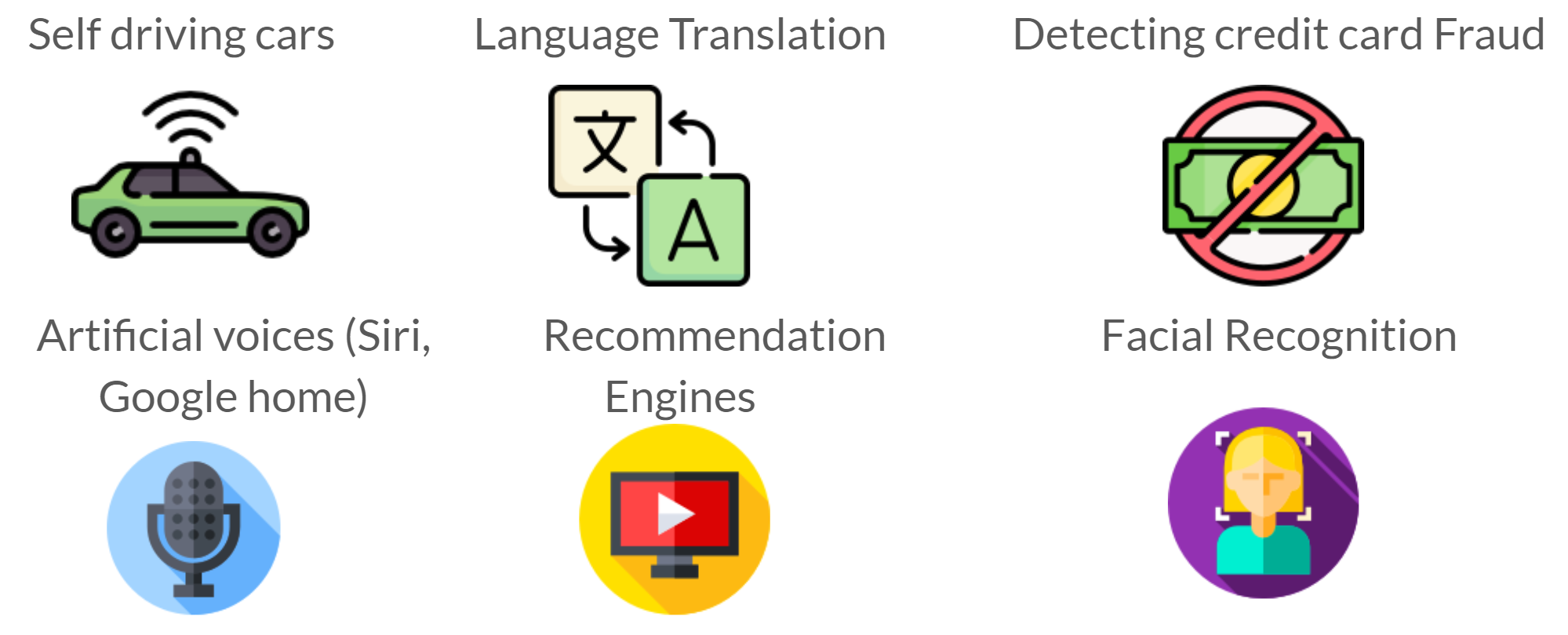
什么是数据科学? (What is Data Science?)
Data Science is a comprehensive process that involves data collection, data cleaning, data visualization, and using various statistical or AI techniques to solve a problem. Artificial Intelligence techniques are a part of the data science process.
数据科学是一个综合过程 ,涉及数据收集,数据清理,数据可视化以及使用各种统计或AI技术来解决问题。 人工智能技术是数据科学过程的一部分 。

人工智能的组成部分 (Components of AI)
1. AI的组成部分-机器学习(ML) (1. Components of AI — Machine learning (ML))
Machine Learning is a subfield of AI that uses algorithms to automatically learn how to perform a given task without being explicitly programmed with rules.
机器学习是AI的一个子领域,它使用算法自动学习如何执行给定任务, 而无需使用规则进行明确编程 。
1.1机器学习(ML)的组成部分 (1.1 Components of Machine Learning (ML))
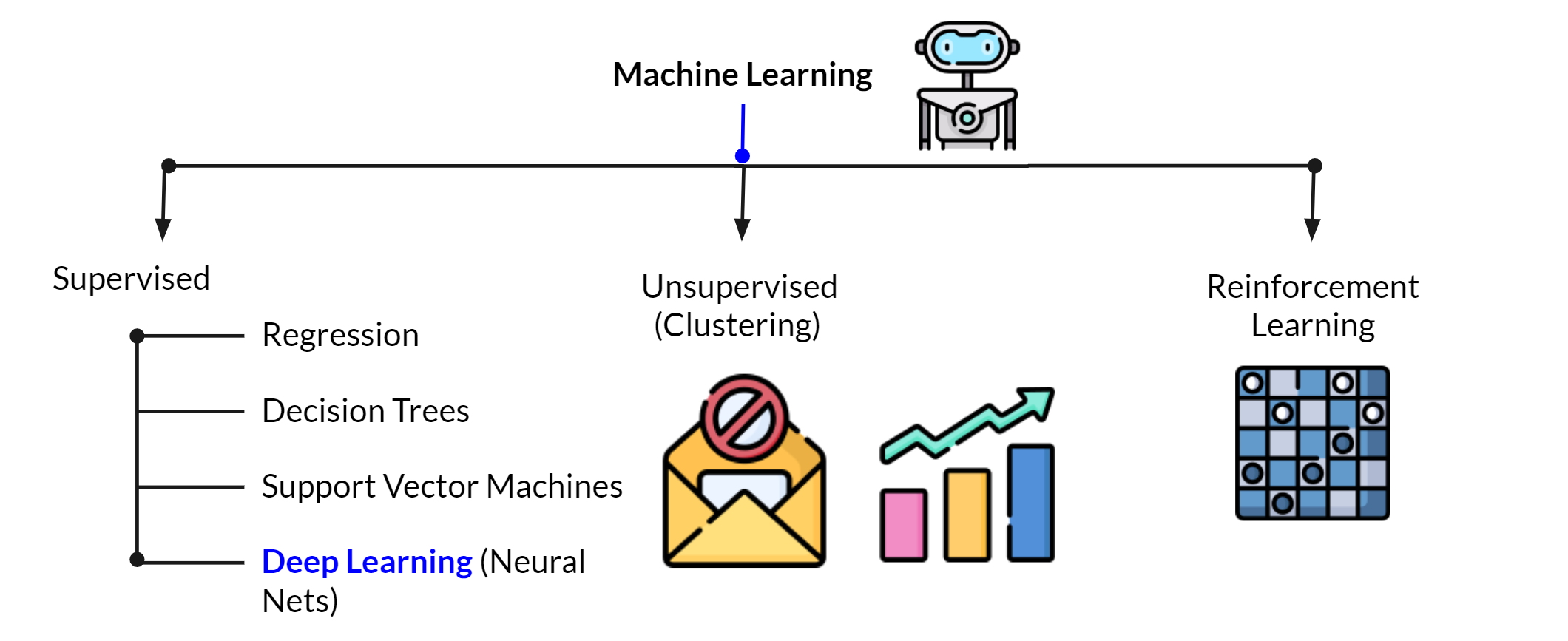
Machine learning has 3 main branches under it — Supervised learning, Unsupervised Learning, and Reinforcement Learning.
机器学习有3个主要分支:监督学习,无监督学习和强化学习。
Let’s take the example of how a small kid learns and apply that to understand these different sub-branches of Machine learning.
让我们以一个小孩如何学习并将其应用于理解机器学习的这些不同子分支的示例为例。
监督学习 (Supervised learning)
Assume that you have a fruit basket with several kinds of fruits. First, you show each fruit to the kid and tell him/her what it is called. Eg: Apple, Banana, Orange, Pomegranate, etc
假设您有一个装有几种水果的水果篮。 首先,您向孩子展示每个水果,然后告诉他/她叫什么。 例如:苹果,香蕉,橙子,石榴等
Then you give a new fruit basket and ask him/her to identify (classify) the fruits in it. This is called supervised learning. You provided labels (fruit names) with training examples (fruits) initially and the kid learns. Then you use his/her learning to classify the fruits in a new fruit basket automatically.
然后,您给一个新的水果篮,并要求他/她识别(分类)其中的水果。 这称为监督学习。 最初,您为标签 (水果名称)提供了培训示例 (水果),然后孩子开始学习。 然后,您可以利用他/她的学习自动将水果分类到新的水果篮中。
Under supervised learning, there are several kinds of algorithms like decision trees, support vector machines, deep learning (neural nets), etc. You can assume these algorithms are like different brains. Each of them has its own learning capabilities and complexities.
在监督学习下,有几种算法,例如决策树,支持向量机,深度学习(神经网络)等。您可以假设这些算法就像是不同的大脑 。 他们每个人都有自己的学习能力和复杂性。
Identifying credit card fraud, predicting house prices, etc are examples of supervised learning where you use historical knowledge from training to predict the outcome for a new sample.
识别信用卡欺诈 , 预测房价等都是有监督学习的例子,您可以使用训练中的历史知识来预测新样本的结果。
无监督学习 (Unsupervised learning)
Take the same problem as above. If you give a fruit basket and ask the kid to separate fruits into different groups without giving any initial knowledge of what each fruit is called, that is called unsupervised-learning (clustering). In this case, the kid uses his/her intuition to cluster the fruits based on shape, color, etc. Here there are no explicit labels (fruit names) given beforehand for each of the fruit in the basket.
解决与上述相同的问题。 如果您给一个水果篮,并要求孩子将水果分成不同的组,而又不对每种水果的最初知识有所了解,那就是无监督学习(聚类)。 在这种情况下,孩子会根据自己的直觉根据形状,颜色等对水果进行聚类。在此,篮子中的每个水果都没有事先给出明确的标签 (水果名称)。
Identifying customer segments in shopping, spam vs non-spam email filtering, etc are examples of unsupervised learning.
在购物, 垃圾邮件与非垃圾邮件过滤等方面识别客户群是无监督学习的例子。
Giving a training dataset with labels (names) vs just giving data to cluster into a fixed number of categories is the main difference between supervised and unsupervised learning.
给予用标签(名称)训练数据集VS只是给数据簇分成一个固定数目的类别是监督和无监督学习之间的主要区别。
强化学习: (Reinforcement learning :)
If you let the kid learn a game by playing it but not explicitly telling any rules, it falls under the category of reinforcement learning. You give a reward for every right action taken and after several attempts, the agent (kid or machine) will learn to do the task automatically.
如果您让孩子通过玩游戏来学习游戏,但未明确告诉任何规则,则该游戏属于强化学习类别。 您对每一个正确的动作都会给予奖励 ,经过几次尝试,座席(孩子或机器)将学会自动执行任务。
Teaching machines to play games like Alpha Go, teaching robots to do a certain task automatically, etc are examples of reinforcement learning.
强化学习的示例包括玩Alpha Go等游戏的教学机,自动执行特定任务的教学机器人等。
1.2特别关注-深度学习(DL) (1.2 Special Focus — Deep Learning (DL))
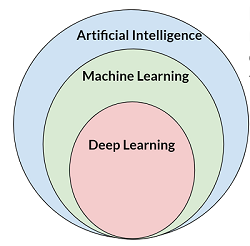
Deep Learning: Deep learning is a part of machine learning that uses a set of algorithms called Artificial Neural Networks inspired by the human brain.
深度学习:深度学习是机器学习的一部分,它使用一组受人脑启发的算法,称为人工神经网络 。
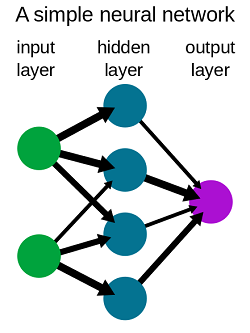
It is the closest algorithm that tries to mimic the human brain.
它是最接近模仿人类大脑的算法。
Just like the human brain has neurons, there are artificial neurons that form a network in deep learning. Each artificial neuron is just a mathematical function that takes a weighted combination of inputs and produces an output.
就像人脑中有神经元一样,也有人造神经元在深度学习中形成网络 。 每个人工神经元只是一个数学函数 ,它采用输入的加权组合并产生输出。
What used to be another algorithm called Neural Networks under Machine Learning, rose to fame rebranding itself as Deep Learning because of modern-day GPU computing power. Now, most of the AI/ML problems are primarily solved with deep learning. Hence the special focus.
机器学习下曾经被称为神经网络的另一种算法因现代GPU计算能力而声名itself起,更名为`` 深度学习'' 。 现在,大多数AI / ML问题主要通过深度学习解决。 因此,特别关注。
2.人工智能的组成部分—计算机视觉 (2. Components of AI — Computer Vision)
Computer Vision is a subfield of AI that uses algorithms to understand images and videos, the same way a human eye does.
Computer Vision是AI的一个子领域,它使用算法来理解图像和视频 ,就像人眼一样。
计算机视觉应用 (Computer Vision Applications)
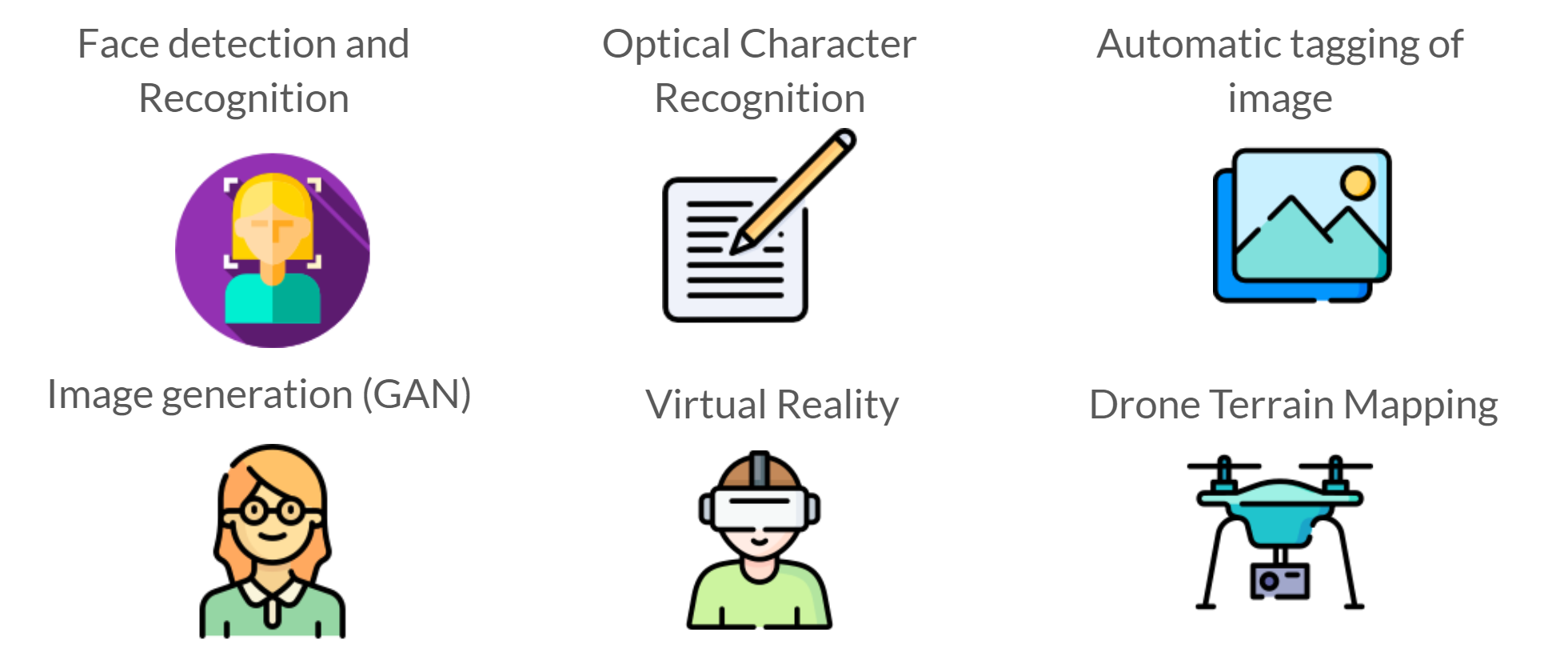
3.人工智能的组成部分- 自然语言处理 (3. Components of AI — Natural Language Processing)
Natural Language Processing is a subfield of AI that uses algorithms to understand, interpret, and manipulate human language ( text and speech).
自然语言处理是AI的一个子领域,它使用算法来理解 , 解释和操纵人类语言 (文本和语音)。
自然语言应用 (Natural language Applications)
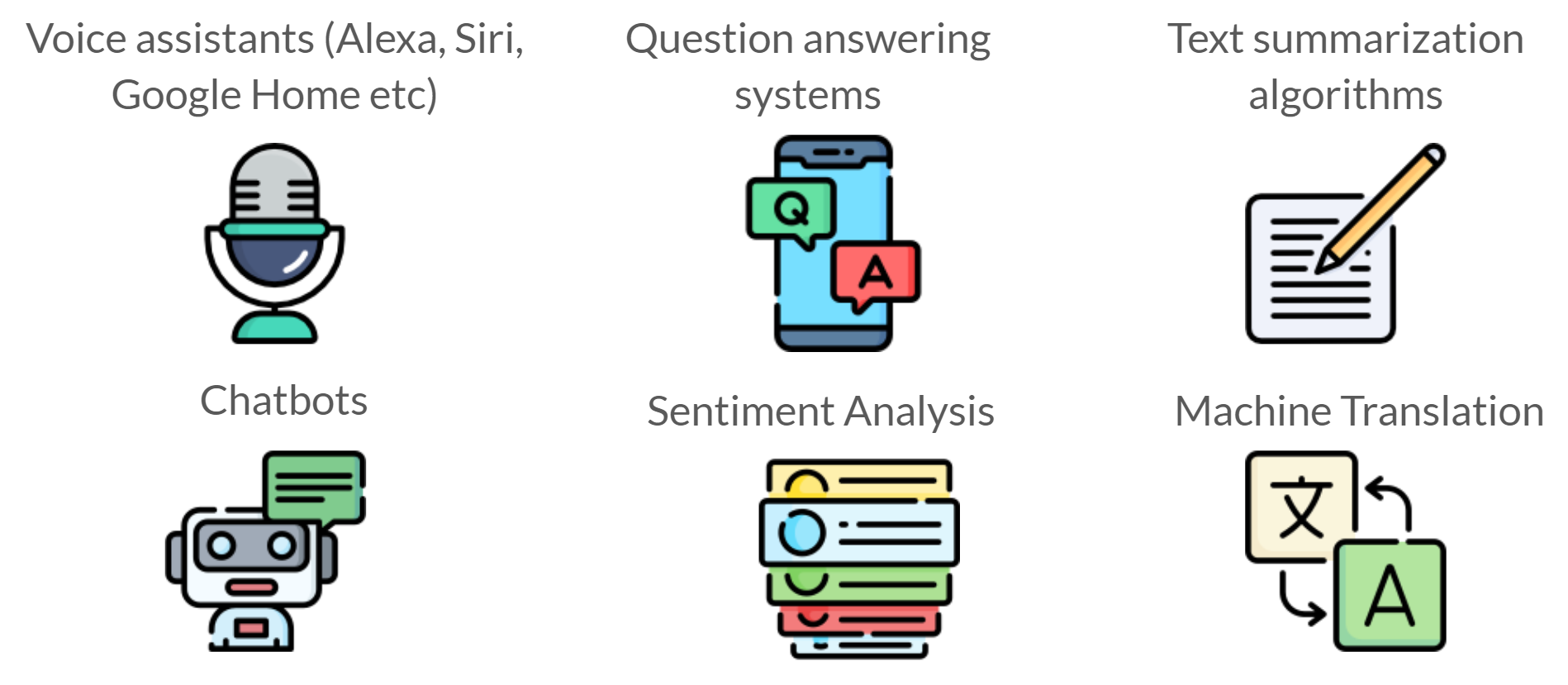
Happy learning!
学习愉快!
nlp 与计算机视觉







 这篇博客是针对初学者的指南,涵盖了人工智能、机器学习、自然语言处理(NLP)以及深度学习中的计算机视觉领域的基础知识。通过本文,读者将获得这些热门技术的入门理解。
这篇博客是针对初学者的指南,涵盖了人工智能、机器学习、自然语言处理(NLP)以及深度学习中的计算机视觉领域的基础知识。通过本文,读者将获得这些热门技术的入门理解。
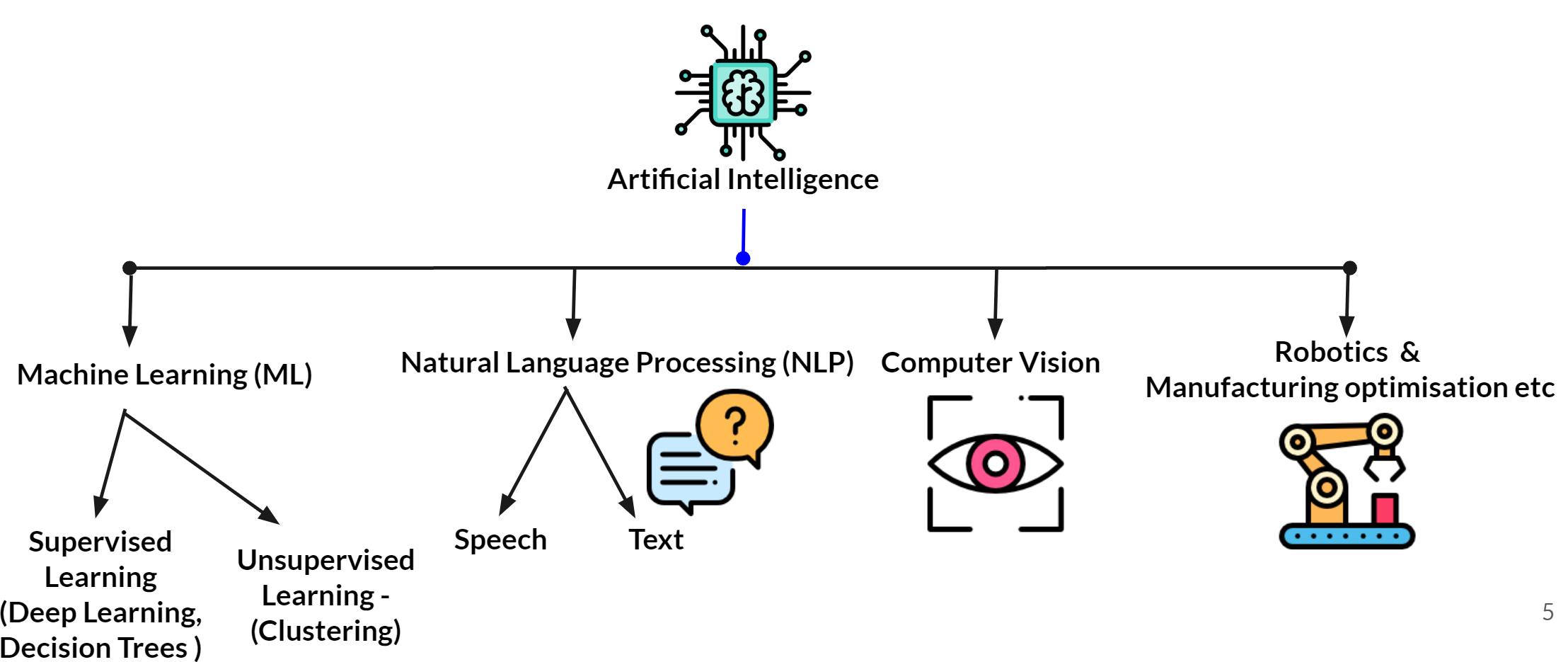
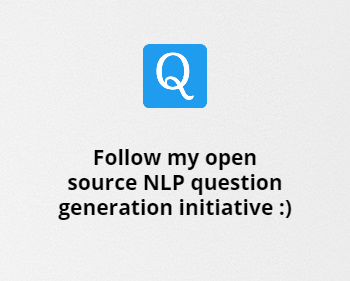
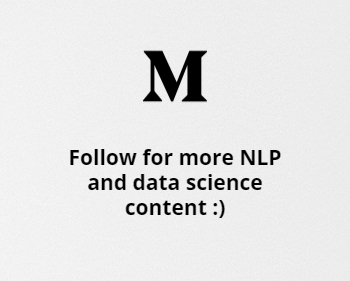
















 被折叠的 条评论
为什么被折叠?
被折叠的 条评论
为什么被折叠?








